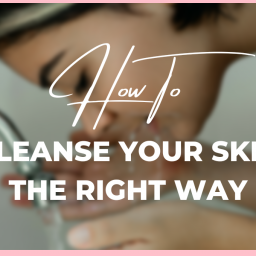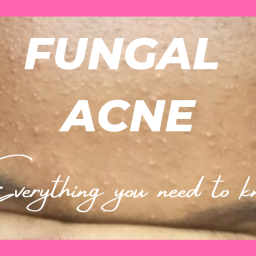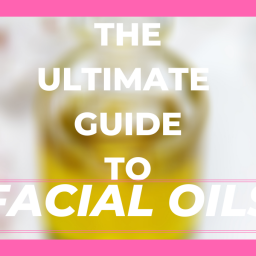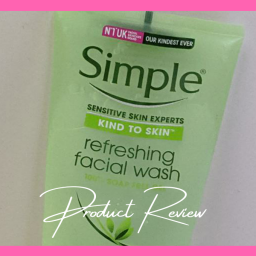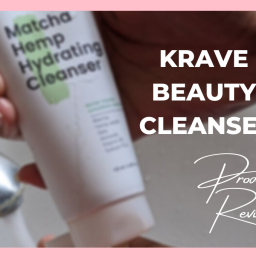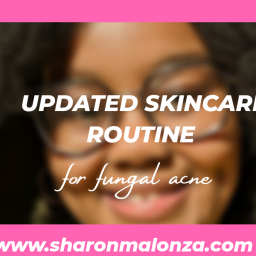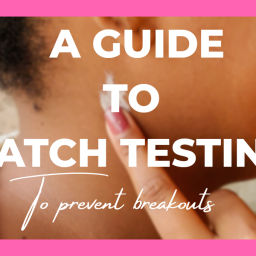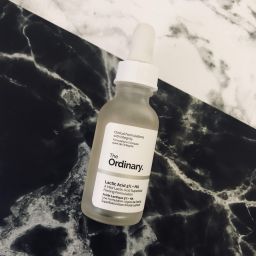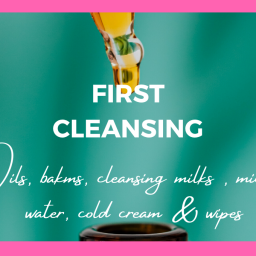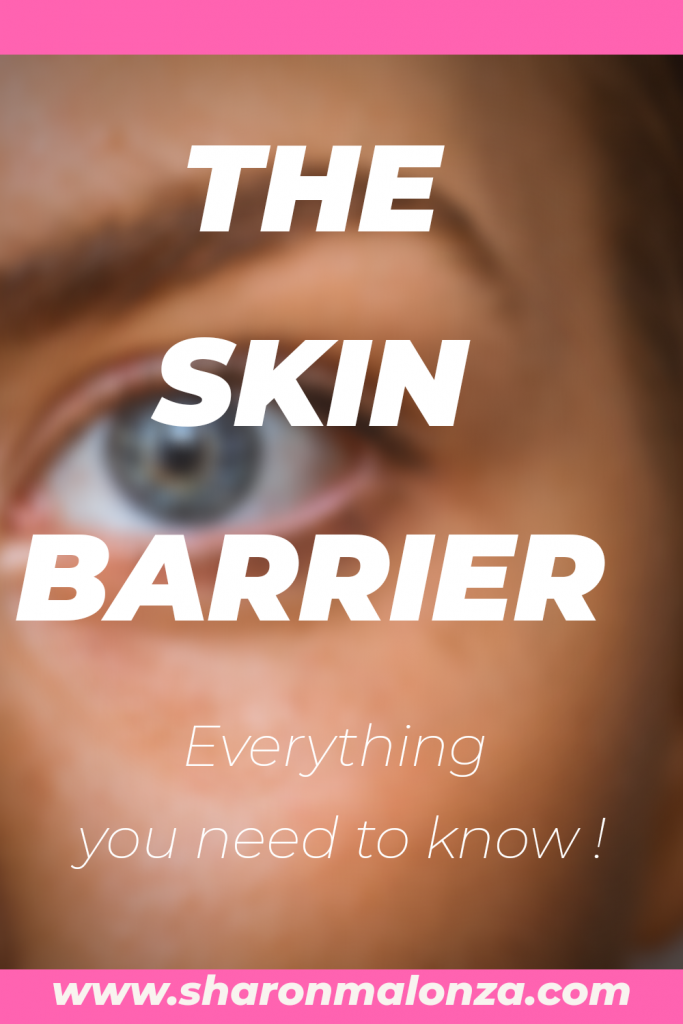
Understanding the skin barrier is one of the most important first steps to building a good skincare routine. The next few paragraphs may be a bit technical so bear with me. (If it really bores you to death, focus on what is in bold and italics)
The skin is the largest organ in our body and is responsible for many functions. Some of the main ones are temperature regulation, sensation, vitamin D absorption and defense from the external environment.
It is made up of two main layers: the epidermis (outer) and dermis (inner). The epidermis is further divided into different layers. The topmost layer is the stratum corneum which is the main element of the skin barrier. This is a physical layer that protects us from infections, chemicals and allergens. It also helps to protect from excessive water loss from the body which is known as trans-epidermal water loss.
Table of Contents
What is the skin barrier made of?
It has a lipid matrix(a fatty layer) in the outermost layer of the skin is crucial for the skin barrier function. This matrix contains cholesterol, free fatty acids and ceramides. There are also antimicrobial peptides produced in deeper layers of the epidermis and transported to the stratum corneum to protect against infections.
Below the stratum corneum are layers which are responsible for regeneration of the stratum corneum. The loss of the corneocytes is balanced by cell growth in the lower epidermis. These cells turn over every 28 days.
These corneocytes also form natural moisturizing factor (NMF) which is an important mixture of water soluble compounds. NMF consists primarily of amino acids or their derivatives, together with lactic acid, urea, citrate, and sugars . Some of these components of the NMF are able to absorb atmospheric water and maintain hydration within the stratum corneum. Therefore, it essentially acts as a humectant.
The combination of the corneocytes, lipids and NMF are what form an effective moisture barrier.
What is the difference between facial skin and the rest of the body?
Products are formulated to cater to the needs of specific parts of the body. Here are a few major differences between the face and the rest of the body:
- Size of skin cells. The skin cells on your face are smaller so they offer less barrier protection than other parts of your body hence why your face is more prone to sensitivity.
- Skin thickness. The skin has different thicknesses because it has different demands placed on it depending on location with parts of the face like under eyes and the neck having thinner skin compared to other body parts like the palms of the hands and soles of the foot which are thicker.
- Oiliness. The skin on the face has a lot more sebaceous glands (oil glands) on it than other parts of the body. The oil (or sebum) has different proposed functions: it helps to lubricate/hydrate the skin, that it contains antioxidants, that it contains antimicrobial (bacteria-fighting) substances.
- Number of other glands. The skin under the arms, in the groin, and in the ear canals have special glands that produce a type of sweat that can smell. These are called apocrine glands. The sweat itself doesn’t smell bad, but it changes when it comes into contact with bacteria that lives on all of us. This produces the smell. Which is why deodorants and antiperspirants exist.
- Amount and type of hair. The density of hair follicles on facial skin is actually quite high, but most of that hair is very fine and hard to see. The density of hair follicles on the face is a lot higher than on the back, for example.
The skincare brand Eucerin has a fairly detailed post on these differences so you can check it out for more information.
Generally, your body skin will often be drier so it needs added adequate moisture . Your face is more delicate and sensitive so it should be handled with care .
What is the difference between male and female skin?
I am including this here because I was particularly curious about it. Ladies often complain that men use 4 in 1 products and somehow have clear skin while we are out here doing the 10 step korean routine but break out from reading the word ‘pimple’.
Some of these results are not streamlined across different studies so I encourage you to do more research.
- In one study, it showed that men experience significantly less transepidermal water loss than women.
- Men have also been reported to have a higher sebum production and larger pore size than women . This is why breakouts, clogged pores and blackheads can be worse and last longer in men.
- Men also have thicker skin(literally). Men’s skin thins gradually with age while women’s skin remains constant until post-menopause after which it thins at a significant rate.
Hormones play a huge role in the difference between male and female skin at different points in their lives. In summary, almost everything goes downhill for women after menopause (don’t quote me on this. If you are menopausal and reading this, sending love your way. You are wonderful and beautiful. Don’t let small small science define your life. There are ways to have healthy skin post-menopause)
What damages the skin barrier?
- Irritants like harsh soaps impair skin barrier function by removing lipids or disturbing the lipid organization of stratum corneum.
- The normal pH of the skin is acidic. Thus, High pH of the skin also delays skin barrier repair and recovery.
- Solar ultraviolet rays can also damage the skin barrier over time. Remember that the stratum corneum is the first line of defense for the skin so it is exposed to UV. The penetration of UV radiation into the skin can photoaging (the main contributor to changes in skin’s appearance with age), and skin cancers.
- Temperature: hot water can dry out the skin and interfere with the skin barrier.
- Active ingredients can also impair the skin barrier. These include certain acids and some prescription creams like steroids and retinoids . Our skin is also more prone to irritation when using actives if our skin barrier is damaged.
- Environmental factors like wind, cold air and varying degrees of humidity also have an impact on the skin barrier.
Signs of a damaged moisture barrier
- Dehydrated , dry and tight feeling skin
- Dull looking skin
- Blackheads, bumps and textured skin: A damaged barrier is more susceptible to bacterial infections. Dehydrated skin often compensates by overproducing oil which can clog pores and cause acne.
- Highly sensitive and easily irritated skin: Your skin might react to products that it was previously not sensitive to.
What improves the skin barrier?
- Application of creams and ointments containing lipids and lipid-like substances, hydrocarbons, fatty acids, cholesterol esters and triglycerides stimulates barrier repair and increases stratum corneum hydration. This means that choosing the right moisturizer is important for supporting good skin barrier function. Hydrocarbons, most commonly petrolatum, have been shown to enhance permeability barrier repair after artificial disruption.This is why some people swear by good ol’ vaseline in their skincare regimen.
- Avoiding what damages the skin barrier is equally important .This is why choosing the right cleanser and wearing sunscreen religiously play a role in maintaining skin health.
- Limit exposure of your skin to hot water.
So why does all this matter?
Understanding how the normal skin barrier functions will provide foundational understanding on common skincare conditions like rosacea, acne, eczema and dermatitis and how to treat them.
I will be doing a deep dive into cleansing, moisturizing and sunscreen use in the other posts in this series. In my opinion, these are the essential components of a good facial and body skincare routine. Other steps like exfoliation, toning and masks may provide added benefits but they often do more harm than good. If you can nail these 3 steps, you are not only saving your skin barrier but also time and money.
I am a firm believer in the less is more approach . You might find that the solution to all your skincare concerns may come from elimination and not addition of products.
Companies want to sell you the next best magical product that will make you glow,look 16 forever and never have a breakout in your life. Once you learn what ingredients to look out for, you will be able to recognize good products from bad ones without needing to purchase them. Truthfully, there are many good brands out there. It is impossible for your favorite content creator to review them and give you a heads up to try them out. It is more important that you have that knowledge with you so that you can make good choices independently.
What am i doing for my skin barrier?
- I am taking a break from using my chemical exfoliant for the next couple of weeks (It was almost over anyway). If I reintroduce it, I will probably only use it once a week.
- Showering and washing my face with lukewarm water.
- To avoid stripping my skin, I skip morning cleansing and only use water.
My focus is on restoring and maintaining my barrier by moisturizing and protecting it. As mentioned on my Instagram stories, I have what I suspect to be fungal acne and will be testing out some specific products for it. I want my barrier at its best so that it handles these new ingredients well. I will be sharing the details and results in a future post.
I hope that this post and those to come will encourage you to read up more on products in order to be a smart consumer.
Always remember that your hair is your crown and your body is a temple; embrace it, love it and take care of it.
References
- Rawlings, A. V., & Harding, C. R. (2004). Moisturization and skin barrier function. Dermatologic Therapy, 17(s1), 43–48. doi:10.1111/j.1396-0296.2004.04s1005.x
- Proc Natl Acad Sci U S A. 2012 Oct 16;109(42):17111-6. doi: 10.1073/pnas.1206851109. Epub 2012 Oct 1.
- Acta Derm Venereol(Stockh) 1994; 74;1-6. doi: 10.2340/000155557416
- Biniek, K., Levi, K., & Dauskardt, R. H. (2012). Solar UV radiation reduces the barrier function of human skin. Proceedings of the National Academy of Sciences, 109(42), 17111–17116. doi:10.1073/pnas.1206851109
- Proksch, E., Fölster-Holst, R., & Jensen, J.-M. (2006). Skin barrier function, epidermal proliferation and differentiation in eczema. Journal of Dermatological Science, 43(3), 159–169. doi:10.1016/j.jdermsci.2006.06.003
- Skin Res Technol. 2012 Nov;18(4):504-10. doi: 10.1111/j.1600-0846.2011.00582.x. Epub 2011 Dec 5.
- Pochi P.E., Strauss J.S. Endocrinologic control of the development and activity of the human sebaceous gland. J Invest Dermatol. 1974;62:191–201.
- Int J Womens Dermatol. 2018 Sep; 4(3): 122–130.Published online 2018 Jun 22. doi: 10.1016/j.ijwd.2018.03.002
Disclaimer: I am not a skincare specialist. This is for informational purposes only based on my own research and experience. It is not a substitute for professional advice.

